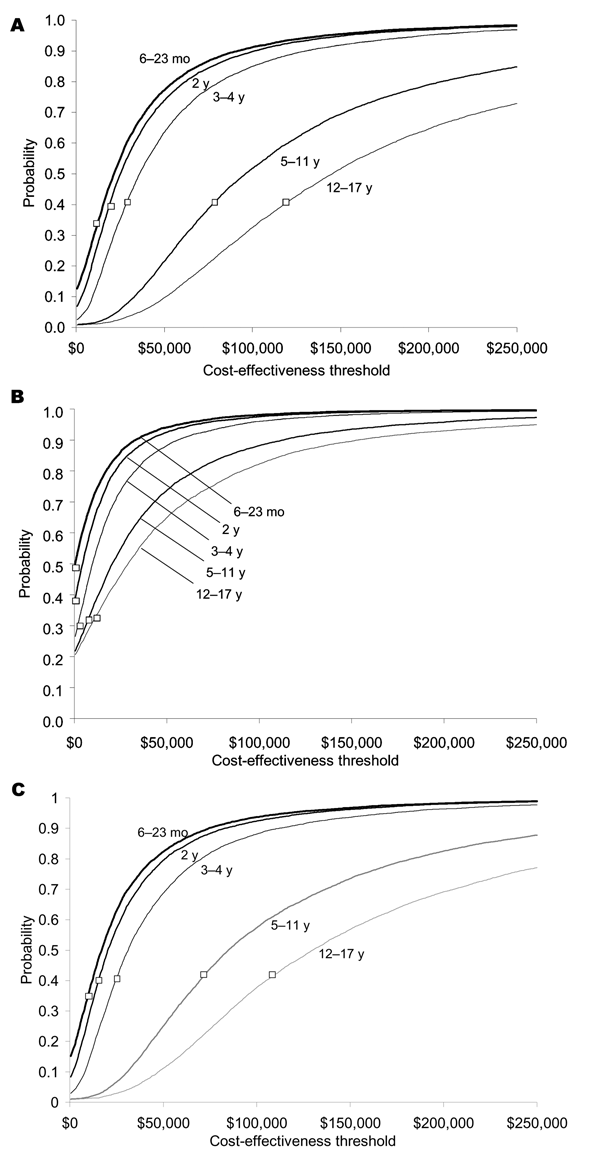Volume 12, Number 10—October 2006
Research
Health Benefits, Risks, and Cost-Effectiveness of Influenza Vaccination of Children
Figure 2

Figure 2. Cost-effectiveness acceptability curves for inactivated influenza vaccine compared with no vaccination (A, children not a high risk; B, children at high risk). Cost-effective acceptability curves for live, attenuated vaccine compared with no vaccine (C, children not at high risk only). Box indicates the mean cost-effectiveness ratio.
Page created: November 09, 2011
Page updated: November 09, 2011
Page reviewed: November 09, 2011
The conclusions, findings, and opinions expressed by authors contributing to this journal do not necessarily reflect the official position of the U.S. Department of Health and Human Services, the Public Health Service, the Centers for Disease Control and Prevention, or the authors' affiliated institutions. Use of trade names is for identification only and does not imply endorsement by any of the groups named above.